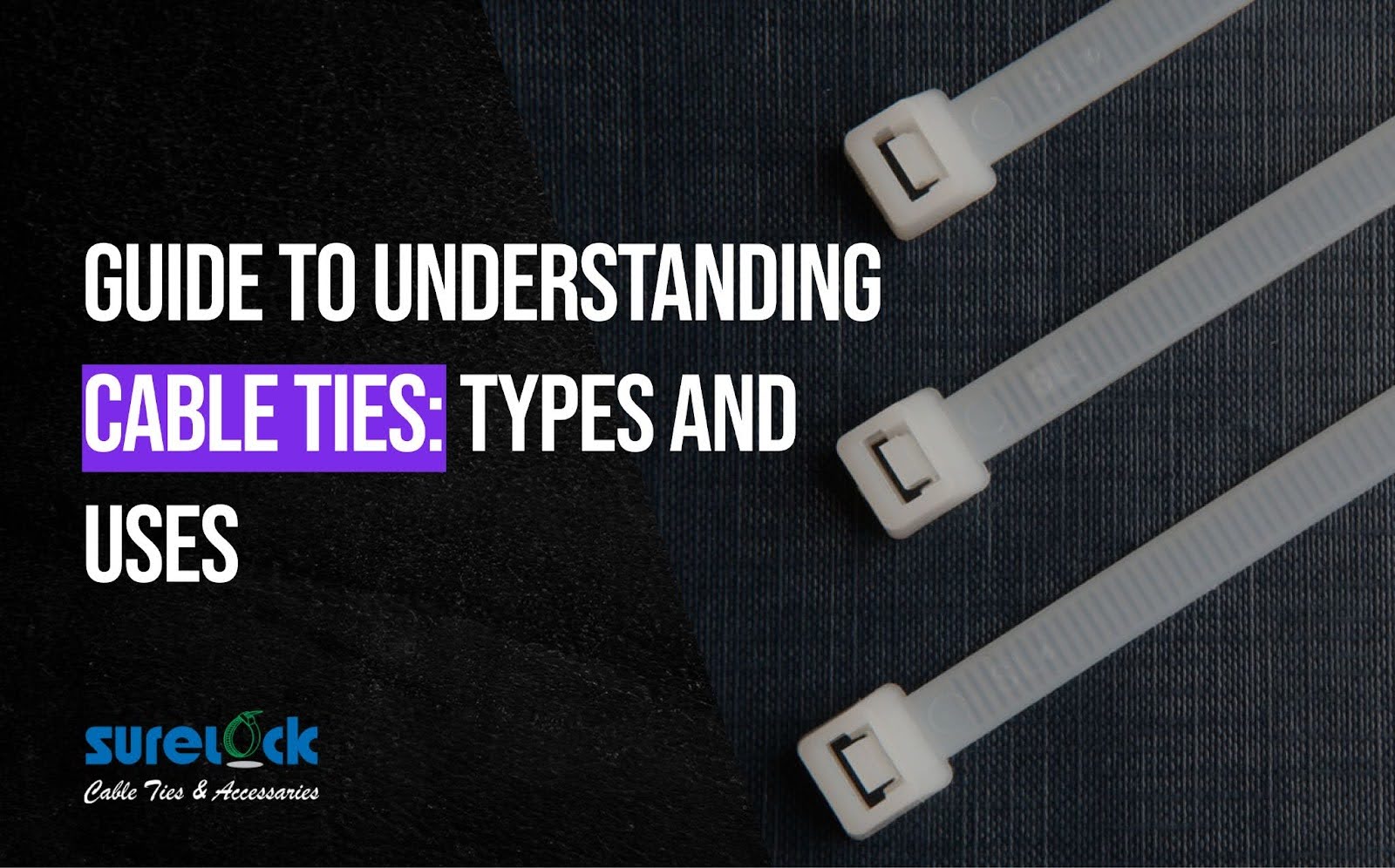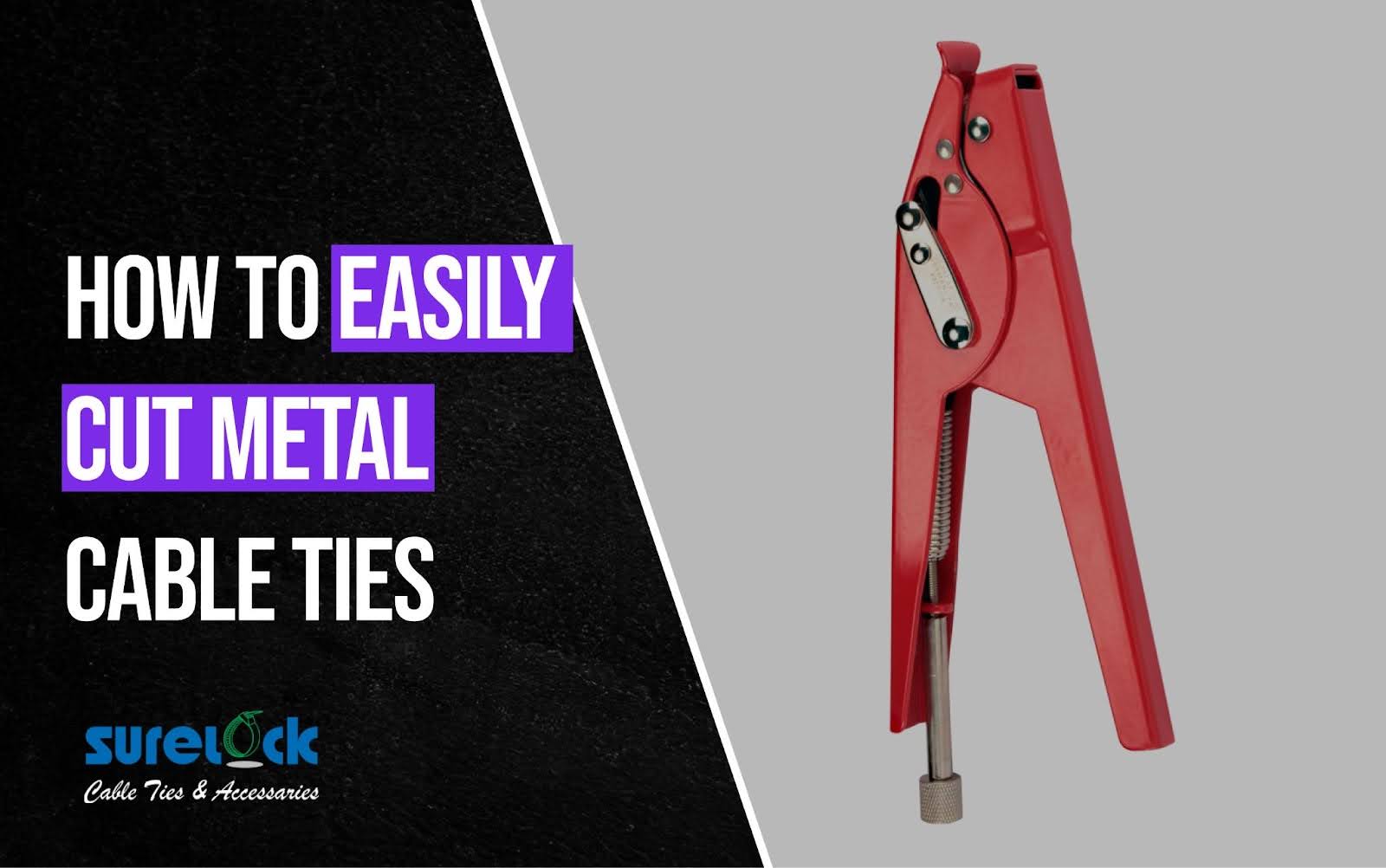Variety of Coloured Zip Ties and Their Uses
October 24, 2025

Introduction
Tangled wires, misplaced cables, or safety risks from unclear wiring — these small frustrations can quickly snowball into big problems. Colored zip ties solve all that with one simple concept: color coding.
These small, sturdy fasteners do more than hold cables together — they bring order, clarity, and efficiency to any environment. Whether you’re managing data center wiring, organizing warehouse cables, or setting up an audio-visual rig, colored zip ties make it easy to identify, separate, and service your cables with confidence.
Why Colored Zip Ties Are More Than Just Fasteners?
In industrial, electrical, and commercial setups, color-coded organization isn’t just convenient — it’s critical. Properly color-coded wiring can:
- Reduce human error during maintenance
- Speed up troubleshooting
- Improve workplace safety
- Enhance visual clarity for technicians and inspectors
That’s why professionals across industries are shifting from plain black ties to vibrant, purpose-coded solutions that keep systems running smoothly.
Surelock’s Colored Zip Ties Collection is designed to meet these exact needs — offering durable, UV-resistant, and high-tensile fasteners built for clarity and performance.
What Are Colored Zip Ties and How Do They Work?
Colored zip ties (also called color-coded cable ties) are flexible, self-locking fasteners used to bundle and organize cables. They’re typically made from nylon 6/6, a material known for its strength, flexibility, and temperature resistance.
Common Types of Colored Zip Ties
- Standard Nylon Zip Ties – Everyday cable management and bundling.
- UV-Resistant Zip Ties – Ideal for outdoor or high-sunlight applications.
- Releasable Zip Ties – Reusable ties for frequently adjusted setups.
- Heavy-Duty or Metal Ties – Industrial or high-tension use.
- Custom-Colored Ties – For brand color-coding or large-scale operations.
Colored zip ties function like any other — insert the tail into the locking head and pull tight — but their colors add a valuable extra layer of identification.
The Benefits of Using Color-Coded Cable Ties
Color coding isn’t just about aesthetics. It’s a system of visual logic that delivers clear operational benefits.
1. Streamlined Organization
Assign each color to a cable type, voltage level, or function. This prevents mix-ups and saves time during installation or repairs.
2. Improved Safety
Clear color differentiation reduces the risk of connecting the wrong lines — particularly in power, data, or communication systems.
3. Faster Maintenance
With pre-coded systems, technicians can immediately identify which cables to inspect, replace, or service — minimizing downtime.
4. Professional Appearance
Organized, color-coded setups communicate professionalism and reliability to clients and inspectors.
5. Efficiency Across Teams
When multiple people handle the same system, consistent color coding ensures everyone understands the layout instantly.
Surelock’s range of vibrant, industry-grade zip ties combines color consistency with high tensile strength for reliability in any environment.
Color Guide: What Each Zip Tie Color Means and When to Use It
While color use can vary by company or industry, the table below shows typical meanings and best practices for colored zip ties:
Pro Tip: For large-scale operations, create a printed reference chart and place it near the control panel or server rack to ensure consistent usage across teams.
How to Build an Effective Color Coding System?
A reliable color-coded system starts with structure and consistency. Follow these five steps:
- Assess Your Environment
Identify the types of cables, power levels, and operating conditions. This helps determine which colors and materials you’ll need.
- Develop a Color Plan
Assign specific meanings to each color. Example:- Red = Power
- Green = Ground
- Blue = Data
- Yellow = Maintenance
- Document Everything
Record your color coding system in a shared file or printed guide. Include diagrams, photos, and reference labels.
- Apply Consistently
Use the same colors throughout your entire setup to avoid confusion.
- Inspect and Maintain
Periodically check for damaged or faded ties and replace them as needed.
Training your team to follow these guidelines ensures smooth maintenance and long-term safety.
Choosing the Right Zip Ties for Your Application
The right material and strength ensure durability and safety. Here’s a quick comparison to help you choose wisely:
For most environments, Surelock’s Colored Zip Ties strike the perfect balance of performance, strength, and color reliability, available in multiple sizes and tensile ratings to match your specific needs.
Best Practices for Cable Organization and Safety
Even with the best colored zip ties, a cable management system only performs as well as its maintenance and setup. Following structured, safety-focused best practices ensures your cables stay secure, accessible, and visually clean for years.
1. Group and Route Cables Logically
Before you even reach for a zip tie, plan your cable paths.
- Group by function: Keep power, data, and audio cables in separate bundles to reduce interference and confusion.
- Plan cable routes: Run cables along walls, ceilings, or cable trays rather than across walkways.
- Maintain slack: Leave just enough length to move or replace equipment without cutting or re-routing cables.
A well-planned layout reduces clutter, improves safety, and simplifies future maintenance.
2. Use the Right Zip Tie Size and Strength
Using the wrong tie size can damage cables or cause them to fail under stress.
- Match the tie length to the bundle diameter: The tail should have at least two teeth left after tightening.
- Avoid overtightening: It can pinch insulation, cause heat buildup, or degrade signal quality.
- Check tensile strength ratings: For heavy-duty or industrial applications, select ties rated for at least 50–120 lbs. of tensile strength.
3. Combine Color Coding with Labels
Colored zip ties provide quick visual cues, but for full clarity, pair them with printed or tag-style cable markers.
- Attach labels near each tie for detailed identification (e.g., “Power A1,” “Data Port 3”).
- Use heat-shrink or wrap-around markers for added durability.
- Maintain a digital record of your color and label references for team consistency.
This dual identification approach minimizes guesswork and accelerates troubleshooting.
4. Prioritize Safety and Accessibility
Cable safety isn’t just about organization — it’s about protecting people and equipment.
- Keep cables away from heat sources, moving machinery, or foot traffic.
- In outdoor or industrial areas, use UV-resistant and flame-retardant zip ties.
- Secure overhead or vertical bundles with multiple ties to prevent them from slipping.
- For maintenance-heavy environments, choose releasable zip ties to avoid repeatedly cutting and re-bundling cables.
These practices ensure compliance with OSHA and electrical safety standards while improving long-term system reliability.
5. Maintain Consistency Across Teams
Even a perfect system can fail if it’s not applied consistently.
- Document your color coding chart and store it in a location that all team members can access.
- Provide brief training to technicians or maintenance staff.
- Use identical color assignments across all departments or facilities.
This ensures that any technician — even a new one — can instantly identify cable functions, reducing downtime and human error.
6. Inspect, Replace, and Refresh Regularly
Cable ties can deteriorate over time due to exposure to UV radiation, vibration, or temperature fluctuations.
- Schedule quarterly inspections for mission-critical setups.
- Replace ties that are cracked, discolored, or brittle.
- For outdoor environments, use UV-stabilized Surelock ties designed for long-term durability.
- After major reconfigurations, update documentation and color references to match the new layout.
Preventative maintenance extends the life of your cabling and ensures visual clarity is never lost.
7. Keep It Clean and Professional
Small finishing touches elevate the professionalism of any setup.
- Trim tie tails flush using a proper cable tie gun or snip tool.
- Align all tie heads in the same direction for a uniform look.
- Use neutral or complementary tie colors in visible areas (like white or grey for office interiors).
Clean, consistent presentation doesn’t just look better — it reflects organized operations and quality workmanship.
Conclusion
Colored zip ties are one of the simplest yet most effective tools for organizing, identifying, and protecting cables. They bring order to complexity, improve safety, and make maintenance faster and easier.
With Surelock’s premium colored zip ties, you can build a color-coded cable management system that’s durable, efficient, and professional.
Explore Surelock’s full range of Colored Zip Ties — available in multiple sizes, strengths, and vibrant colors — and take your cable organization to the next level.
Request a free sample or shop the collection today.
FAQs
1. Are colored zip ties as strong as black ones?
Yes. Surelock’s colored zip ties are made from the same high-quality nylon as black ties, with added pigments for color consistency — no compromise on tensile strength.
2. Can colored zip ties be reused?
Only if they’re designed to be releasable. Standard zip ties are single-use, but releasable versions can be safely reused for temporary setups.
3. Do colored zip ties fade outdoors?
Standard nylon ties can fade with prolonged UV exposure. Select UV-stabilized versions for outdoor applications to ensure color stability and longevity.
4. What size zip ties should I use?
It depends on your bundle diameter and weight. As a general rule:
- Small cables: 4"–6" ties
- Medium bundles: 8"–12" ties
- Heavy-duty or industrial: 14"–24" ties
5. Can I order custom colors?
Yes. Surelock offers custom color options and bulk orders to match your company’s existing color scheme or branding needs.



